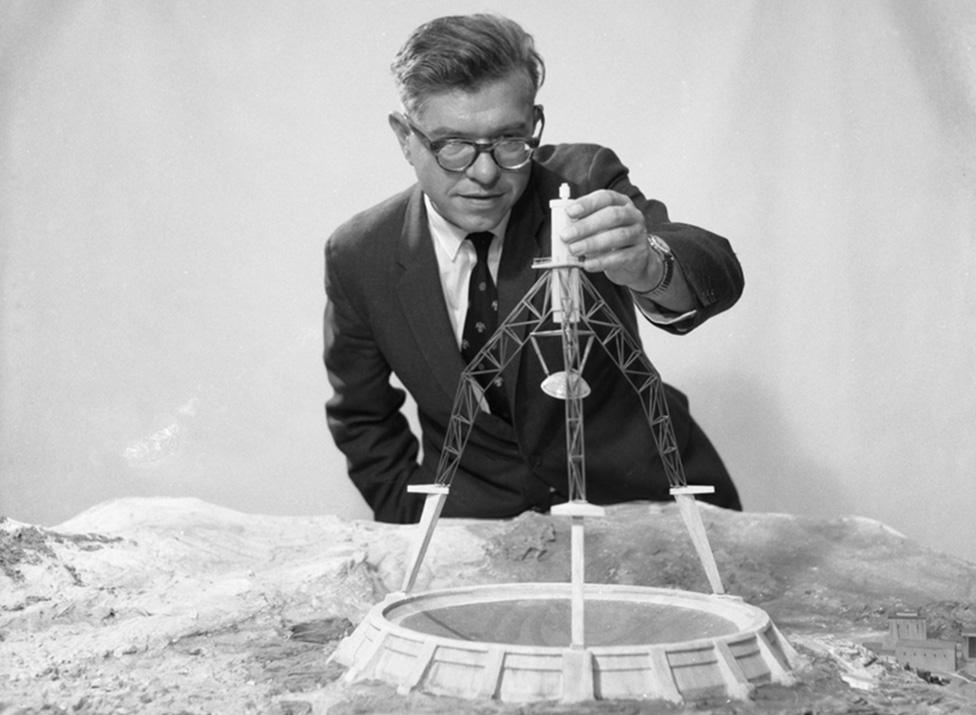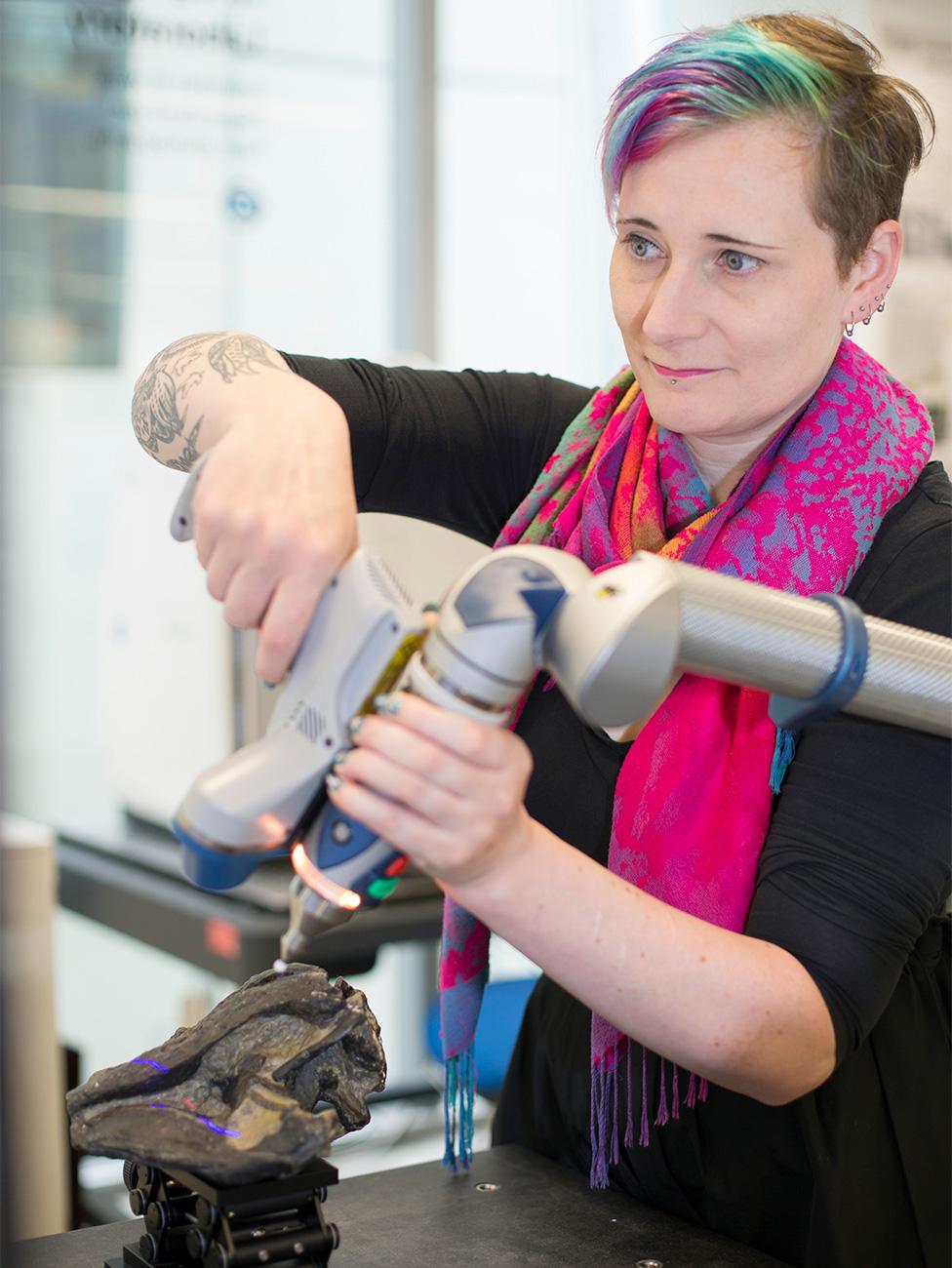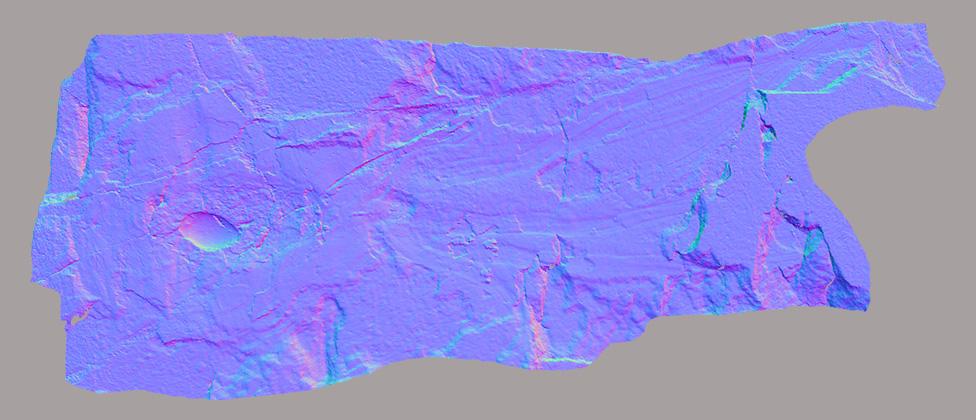Archaeopteryx: The day the fossil feathers flew
- Published
Modern scanning techniques show Archaeopteryx is no fake
There is no greater insult you can hurl at a museum than to suggest its prize fossil is a fake.
But that's what the esteemed astronomer Sir Fred Hoyle did in 1985 when he doubted the authenticity of arguably the most priceless possession in the collections of what is now London's Natural History Museum (NHM). All hell broke loose as the claim made headlines around the world.
The fossil was Archaeopteryx - the seminal discovery made in a German quarry just a couple of years after Darwin published his theory of evolution.
Archaeopteryx' significance is that it demonstrates birds are likely descended from dinosaurs.
The 147-million-year-old fossil is split across two slabs of rock - what experts call a "part and counterpart". Flip your eyes back and forth between the pair and you'll see an extraordinary mix of features - with the teeth, tail and hands of a reptile; but with a wishbone, feet and a spectacular spread of feathers that just scream "bird".
And it was those feathers that Sir Fred couldn't accept.

An astronomical claim: The museum simply could not ignore Sir Fred
He imaged them with an SLR camera from all angles and announced, in the Journal of Photography, that they were probably deliberate impressions made in some kind of limestone cement that had been added on top of a true dinosaur specimen.
The museum took great umbrage and responded with a detailed analysis in the journal Science, external. It had to.
Sir Fred was high-profile and if the idea of fakery in a transitional fossil went unchallenged, Archaeopteryx would quickly become a cause célèbre for the anti-evolution movement. And don't forget, the museum was the scene of perhaps the biggest fossil fake of all time - Piltdown Man.
The astronomer's accusation could not be allowed to pass.
Lorraine Cornish: "Archaeopteryx is one of our most iconic specimens"
The "evidence" of forgery was actually pretty easy to unpick. Microscopic investigations showed that hairline cracks in the feathers, invisible in the SLR images, could be matched up on the part and counterpart. Likewise, the branching of manganese crystals running through the rock.
But there was one test the NHM couldn't do properly back then which it can do today. And that is to bring the two halves of the fossil back together to show they are a perfect fit.

Dr Scott-Murray's department is now busily scanning the NHM's collections
The addition of a fake limestone base for the feather impressions should make that impossible because it would have changed the shape of the slabs. The museum certainly had a go back in the late 80s using carefully made casts, but these cannot replicate the precision of modern digital techniques. And so it was during recent conservation work that the two halves of Archaeopteryx were put in a laser scanner.
Lo and behold, the virtual part and counterpart seamlessly go together at a scale that can be measured in microns (thousandths of a millimetre).
"We've colour-coded the scan and where it's green, there's essentially no gap between the part and counterpart," explained Dr Amy Scott-Murray from the NHM's Imaging and Analysis Centre, external.
"A lot of it is blue, showing a positive gap of a few millimetres, and that's where conservators have excavated the limestone to better show the bones. But as you can see, most areas are a perfect match," she told me.
Dr Amy Scott-Murray: "It's a powerful technique that allows us to make digital surrogates"
The museum acquired its scanning equipment when it decided to move its blue whale skeleton into the main entrance hall, in place of "Dippy" the diplodocus.
All the cetacean's bones were cleaned and had digital copies made of them before being re-hung in the new location.
Thousands of specimens at the NHM will ultimately go through the same process.

Can you see the head and tentacles? A 95-million-year-old fossil octopus, Keuppia sp.
Lorraine Cornish, the NHM's current head of conservation, had not long joined the museum when the Archaeopteryx row flared up. It was her job to make the copies for the rebuttal analysis using dental rubber and resin.
"Back in the day, I was always making casts of the likes of Archaeopteryx for other museums and institutions," she said. "But today, with this amazing technology and 3D printing - we can make copies that are three times the size, or half the size; and we can even emphasise particular parts and print those off. All the while, we minimise the risk to the specimen because we get it out once, scan it and then just share the digital files."
She added: "The part and counterpart of Archaeopteryx are very heavy, and elements of the fossil are very fragile. So, you could never really bring them together in the way we can with this new technique.
"I have a huge emotional attachment to this fossil. I remember how hurt and upset everyone was in the museum when the original claim of forgery was made, and the huge amount of work that went into refuting that claim. This laser scan is just one more piece in the puzzle that rejects what Sir Fred wrote about Archaeopteryx."
Archaeopteryx lithographica can be viewed in the NHM's Treasures Gallery, external above Hintze Hall, the location of the blue whale.